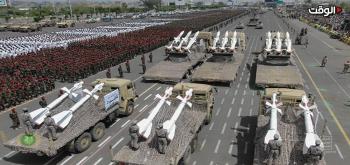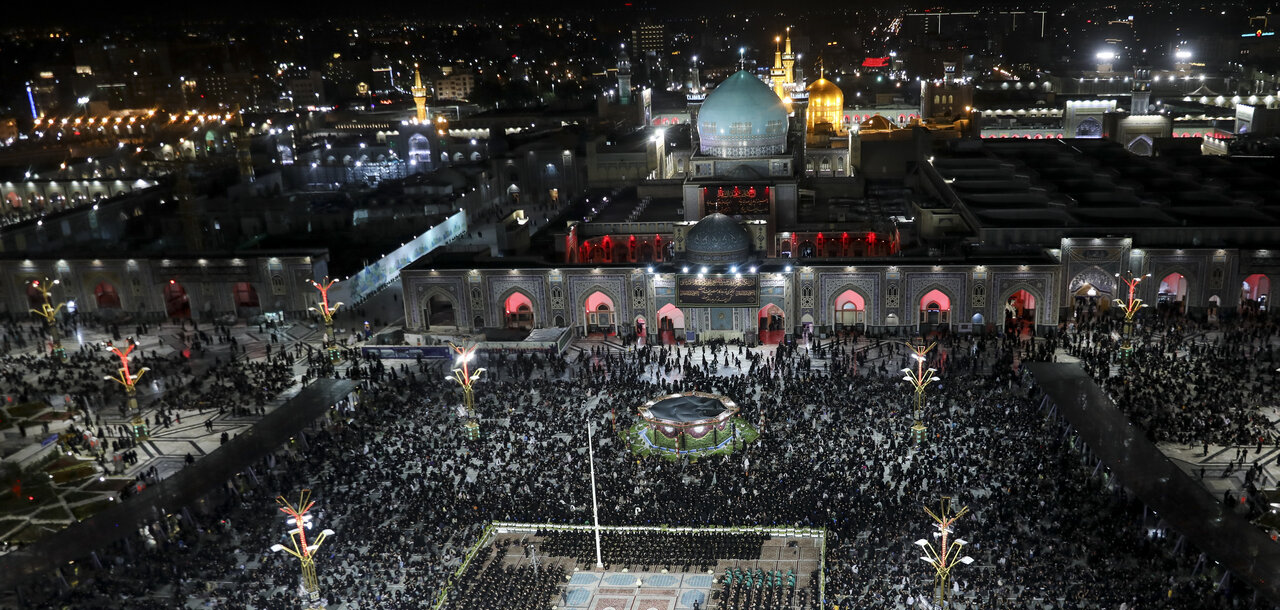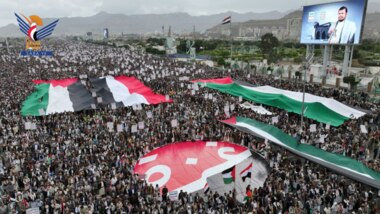Alwaght- On February 23, 2016, the Al-Monitor news website published an interview with Sheikh Mahmoud Jouda, a Palestinian cleric who was born in 1960 in Rafah Refugee Camp. Educated in Sharia and Islamic Studies in Umm Al-Qura University in Mecca, Sheikh Jouda is the founder of Jamaat al-Muslimeen group in 1985.
The group is known among the Palestinians as Takfir wal-Hijra. The group promotes for separation of religion from politics. Sheikh Mahmoud Jouda has several times visited Iran to make research on Twelver Shiite Islam, for which he was several times detained and prisoned by the Egyptian government and the Israeli regime. Mahmoud Jouda has become a controversial figure after a couple of his photos, while posing with a Shiite clerics’ turban on his head and surrounded by a couple of special bodyguards, have been circulated on the social networks on January 20, 2016. At that time, it was known that his guards were actually members of Al-Saberin Movement, a Shiite resistant group affiliating to the Palestinian Islamic Jihad Movement. Also, in a video which has been sent online he was portrayed as being among a group whose members were having headbands of Ya Hussein, an Arabic phrase used by Shiite Muslims to invoke the memory of Imam Hussein. The video showed the sheikh while talking about the Iranian triumphs.
Commenting on the video, Sheikh Jouda has said that “the video was of the session of a campaign and the Ya Hussein headbands were distributed by a person. I was invited to the gathering and I didn’t know the attendees. But a couple of minutes after conducting the speech and putting a video on show the police forces have stormed the session and detained us. You could see that it was all pre-planned.”
It is worth noting that Sheikh Jouda, since 2013, has been widely known in Gaza due to his resemblance to Iran’s Imam Khomeini, the founder of the Islamic Republic. Besides, propagating the Ahl al-Bayt teachings, he is busy inviting for Islamic unity regardless of Shiite and Sunni branches of Islam. While mentioning on his website the good ties between the Iranian and Lebanese Shite clerics, Sheikh Jouda has admitted that he had good relations with Sunni clerics. In an interview with Al-Monitor he has said that after 20 years of activity he concluded in 2006 that:
“The party work destroys life and religion and it distances us from the major aim which is forming an Islamic government and fighting against oppression on the earth, therefore, we declared our renunciation for partisan work in 2006 as we realized that it leads people to a path that diverges from what they really want.”
Despite the fact that Ahmad Yousef, the advisor of Hamas leader Ismail Hanyeh, denied in 2011 that there was a growth in the number of Shiite Muslims in Gaza, the warns about the increase of the number of Shiite Muslims have been issued since 2011, the time of start of the Syrian crisis and before which Iran and the Palestinian movement Hamas enjoyed good relations. At that time, Abdul Rahim Hamad, a Sunni convert, said that the number of Shiite Muslims in Gaza Strip was several hundred. He added that the Shiites would soon start political activity in Gaza Strip and would play a significant role in the future of Gaza.
In fact, promotion for Shiite Islam has observed an increase when on May 31, 2014, a new group called Al-Saberin Movement declared existence in Gaza. The movement’s logo resembled that of Lebanon’s Hezbollah. Openly announcing that it was a Shiite group, the movement has chosen unity as its slogan. Actually, this movement is considered as an affiliate of Palestine Islamic Jihad movement and it is led by Hisham Salem, who has described the Al-Saberin as a non-religious group whose goal was to restore the Islamic unity. Such an issue has been taken by the Arab media as a pretext and theme for their propaganda to say that there were deep gaps between Iran and the Islamic Jihad movement, the root of which, according to the Arab media’s allegations, was Iran’s massive intervention in the regional developments, especially intervention in Yemen and Tehran’s struggles to challenge the balance of power through propagating Shiite Islam.
For example, the Islamic Jihad commanders have been quoted as saying that Islamic Jihad movement, and its leader Ramadan Abdullah specifically, have disparaged Iran’s support for Yemen’s Ansarulah movement, leading to Tehran’s cutting off financial support for the Palestinian group and causing a financial crisis for the it.
On January 9, 2016, the Islamic Jihad sources have noted that about 300 members of the movement had defected from the movement due to the financial crisis and joined the terror group ISIS. Some Arab media have reported that Ramadan Abdullah had left Tehran to Beirut in protest to the Islamic Republic’s policies in Yemen. Concerning the case, Mahfuz Monawar, a leader in Islamic Jihad movement, was interviewed by Aljazeera news network.
Answering to the question, Monawar has not denied that there were differences between Iran and the Islamic Jihad. He added that the reports about the case were “highly exaggerated and inaccurate.” He continued that Abdullah’s departure was something natural because the movement’s leadership had fixed headquarters. Monawar also noted that the approach of the movement was to refrain from intervening in the countries’ internal policies. Not giving details about the Al-Saberin Movement, Monawar has said that the movement was in full accordance with other Palestinian groups. Thanking Iran for supports, Monawar has called his movement’s relations with the Islamic Republic as positive.
He added that his movement had no intention to intervene in Iran’s policy. Therefore, the Arab media’s propaganda in 2016 has been fixated on saying that Iran was struggling to spread Shiite Islam in Gaza and that both Hamas and Islamic Jihad have been in an inactive and silent position in front of Tehran’s activities. While trying to imply that there are gaps between Iran and Hamas and the Islamic Jihad movements, the Arab media’s new propaganda describes establishment of Al-Saberin Movement as the last resort of the Islamic Republic concerning Gaza and Palestine issue. Jihad Halas, the head of zakat department of ministry of endowment in Gaza on February 29 has talked about destroying a large number of Shiite books. He cautioned against the threats posed to the Gaza young people by the Shiites, praying for God to save Gaza and its inhabitants from the evils and greed of the Shiite Muslims.
Sheikh Majdi al-Maqrebi, a Salafi cleric in Gaza, has also warned against the growth of the “danger of the Shiite Muslims”, calling Al-Saberin Movement as an Iran-backed group and asserting that Tehran and Hezbollah were the major funding sources of all groups of this kind in the region. Al-Maqrebi has added that Iran and Hezbollah have created a chain of groups under the name of resistance in Gaza.
With a regard to the focus of the media propaganda against the Shite Muslims and Al-Saberin Movement in Gaza, it must be said that such media eye preparing the ground for clash between the newly born Shiite minority and the Sunni Palestinian jihadi movements like Hamas and Islamic Jihad in Gaza. On the other hand, the Shiite Muslims could face a crisis in Gaza as the Salafi movements are trying to step in the case. Using the right strategies of promotion of unity between Shiite and Sunni Muslims, the Al-Saberin Movement and Sheikh Mahmoud Jouda have so far managed to open their way under the silence of resistant groups. However, the financial pressures and the possible interventions by external players like Saudi Arabia and the suggestions made by them for compensating for the resistant groups’ budget deficits could transform the Palestinian movements, pushing them to act to prevent shift of balance of power in Gaza Strip.



























